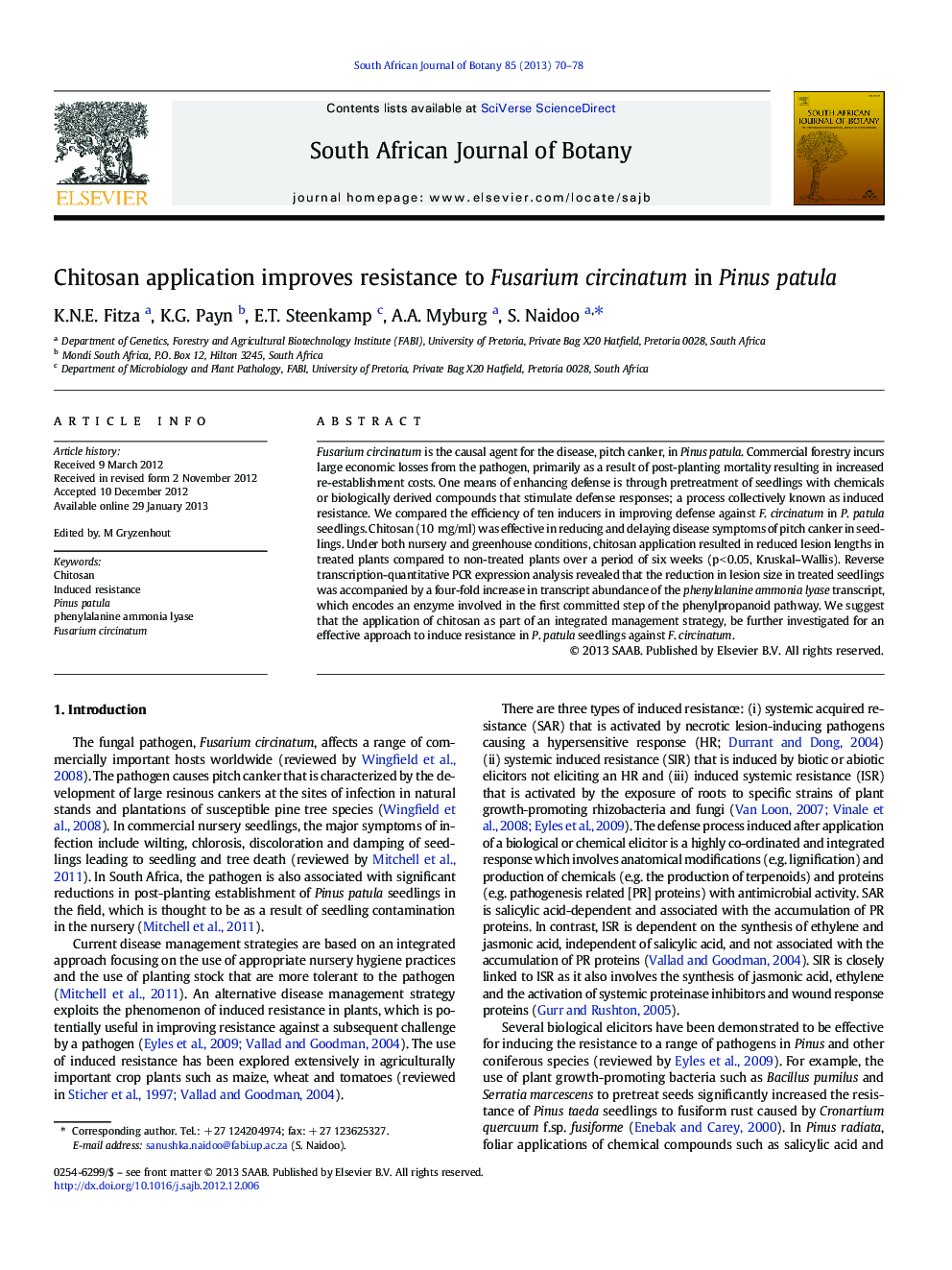| Article ID | Journal | Published Year | Pages | File Type |
|---|---|---|---|---|
| 4520954 | South African Journal of Botany | 2013 | 9 Pages |
Fusarium circinatum is the causal agent for the disease, pitch canker, in Pinus patula. Commercial forestry incurs large economic losses from the pathogen, primarily as a result of post-planting mortality resulting in increased re-establishment costs. One means of enhancing defense is through pretreatment of seedlings with chemicals or biologically derived compounds that stimulate defense responses; a process collectively known as induced resistance. We compared the efficiency of ten inducers in improving defense against F. circinatum in P. patula seedlings. Chitosan (10 mg/ml) was effective in reducing and delaying disease symptoms of pitch canker in seedlings. Under both nursery and greenhouse conditions, chitosan application resulted in reduced lesion lengths in treated plants compared to non-treated plants over a period of six weeks (p < 0.05, Kruskal–Wallis). Reverse transcription-quantitative PCR expression analysis revealed that the reduction in lesion size in treated seedlings was accompanied by a four-fold increase in transcript abundance of the phenylalanine ammonia lyase transcript, which encodes an enzyme involved in the first committed step of the phenylpropanoid pathway. We suggest that the application of chitosan as part of an integrated management strategy, be further investigated for an effective approach to induce resistance in P. patula seedlings against F. circinatum.
► Induced resistance against pitch canker was investigated in Pinus patula seedlings. ► Ten chemical and biologically-derived inducers were tested. ► Chitosan (10 mg/ml) was effective in reducing and delaying disease symptoms. ► Treated seedlings showed an up-regulation of phenylalanine ammonia lyase (PAL). ► The latter result suggests the onset of induced resistance in P. patula.
